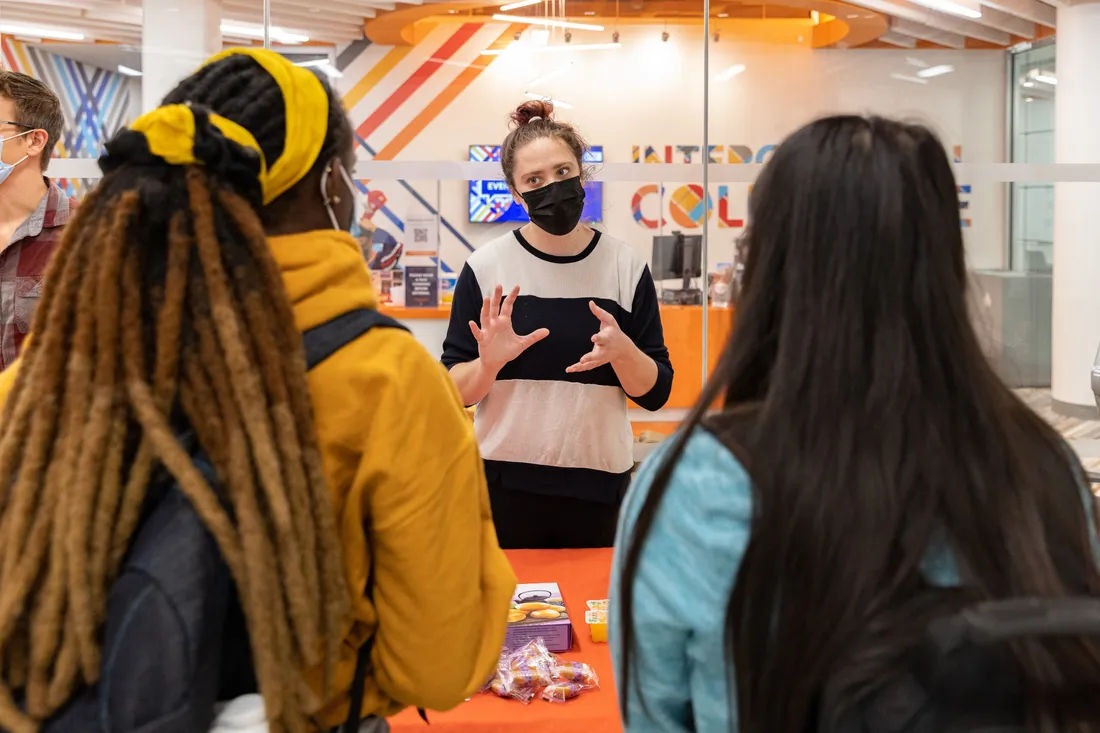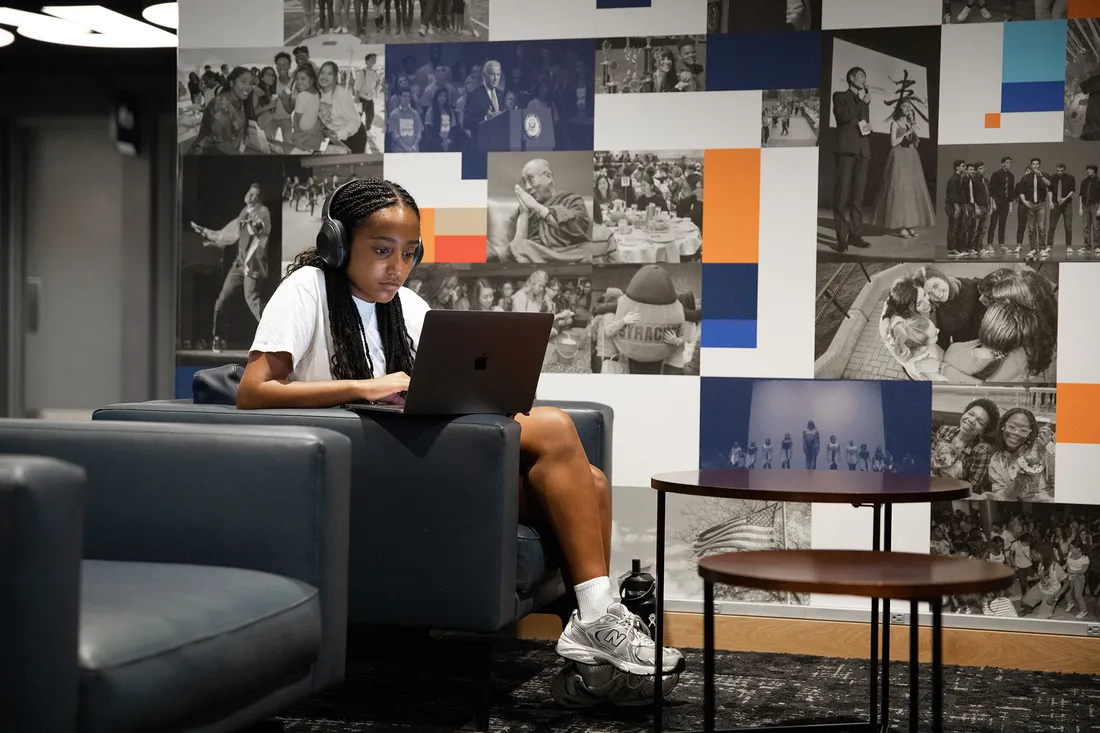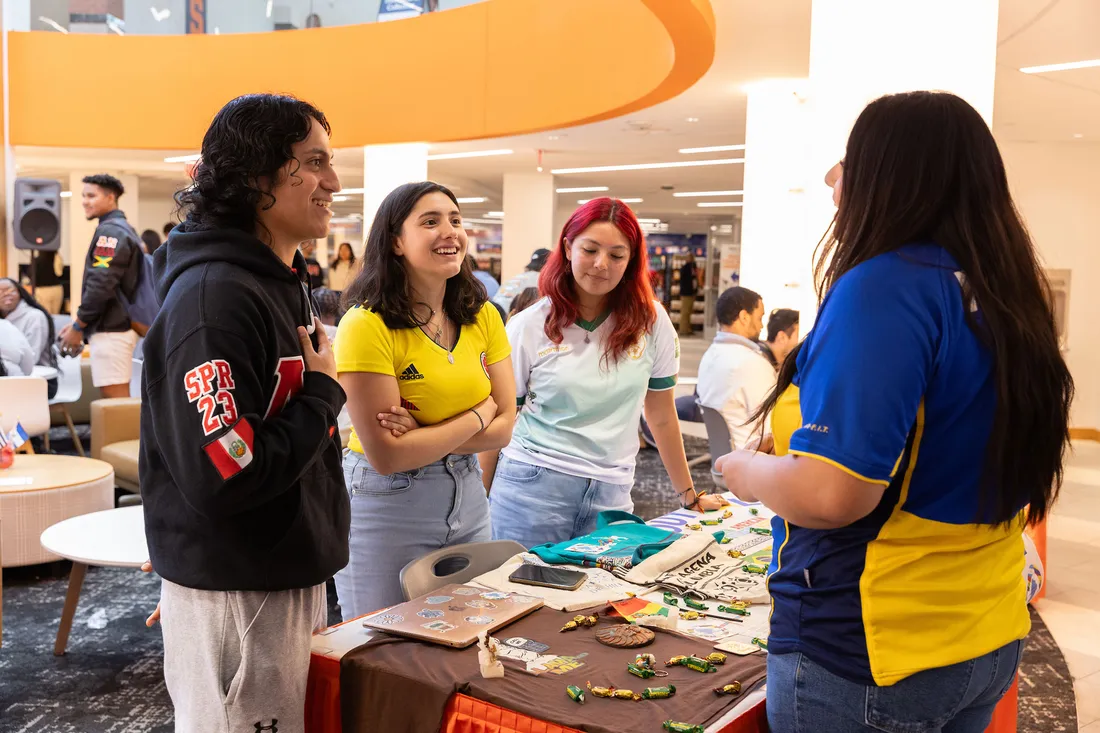
During Latine Heritage Month, the Syracuse University community highlights the diverse cultures and contributions of people with ancestry from the Spanish speaking countries of South and Central America and the Caribbean.
“Let’s take a moment to acknowledge and appreciate the richness of our heritage and the achievements of Latinos around the world and here on campus!” German Nolivos ’26, president of Las Naranjas Spanish Club and vice president of community and government affairs in the Student Association, extended this warm invitation to the campus community at the opening ceremony of Syracuse University's Latine Heritage Month celebration. Nolivos is one of the many students, faculty and staff who collaborated to organize events and programming in recognition of this cultural heritage month, which is observed across the nation from Sept. 15 to Oct. 15 in honor of the culture and contributions of people with ancestry from the Spanish speaking countries of South and Central America and the Caribbean.
At Syracuse University, the month’s programming is an opportunity for the campus community to enjoy, explore and celebrate what it means to be Latine at Syracuse and beyond.
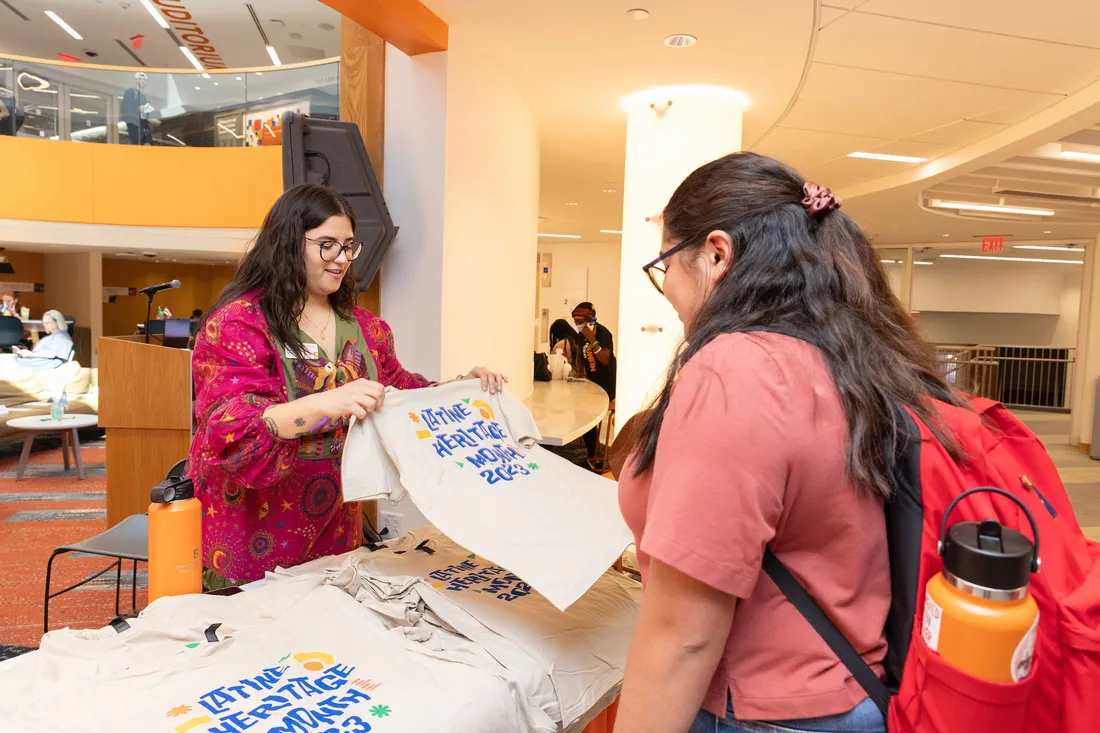
Intersectionality and solidarity are important themes of this year’s events, says Breana Nieves Vergara, assistant director of Multicultural Affairs. “Our culture is an amalgamation of different histories and peoples,” she says. “We build a lot of different identities within that.”
Honor Diversity and the Intersection of Identities
Syracuse University has been celebrating this cultural heritage month for 18 years, though this is the first year it includes “Latine” in the title. “Latine” is a gender-neutral form of “Latino” and was created by gender nonbinary and feminist communities in Spanish-speaking countries. The adoption of the term speaks to an intention to highlight of the rich diversity within the Latine identity, says Breana Nieves Vergara, assistant director of Multicultural Affairs. “Our emphasis is around solidarity, intersectionality across cultures and highlighting how our culture is an amalgamation of different histories and peoples,” she says. “We build a lot of different identities within that—and it continues to evolve.”
Center Student Voices
Nolivos, who is a Posse Leadership Scholar and dual majors in political science in the Maxwell School of Citizenship and Public Affairs and public relations in the S.I. Newhouse School of Public Communications, is a first-generation college student whose family immigrated to the United States from Venezuela. For Nolivos, connecting with other Syracuse students with shared culture, language and life experiences is an essential element in his sense of belonging and purpose.
Wanting to foster opportunities for other Latine students to make these connections and express their culture motivates Nolivos’ involvement in a range of student organizations and his contributions to Latine Heritage Month. “We students are the best ones to determine how we want to celebrate our culture,” he says. “It's crucial for us to be actively involved in these conversations and to share our ideas.”
Celebrate, Appreciate, Learn
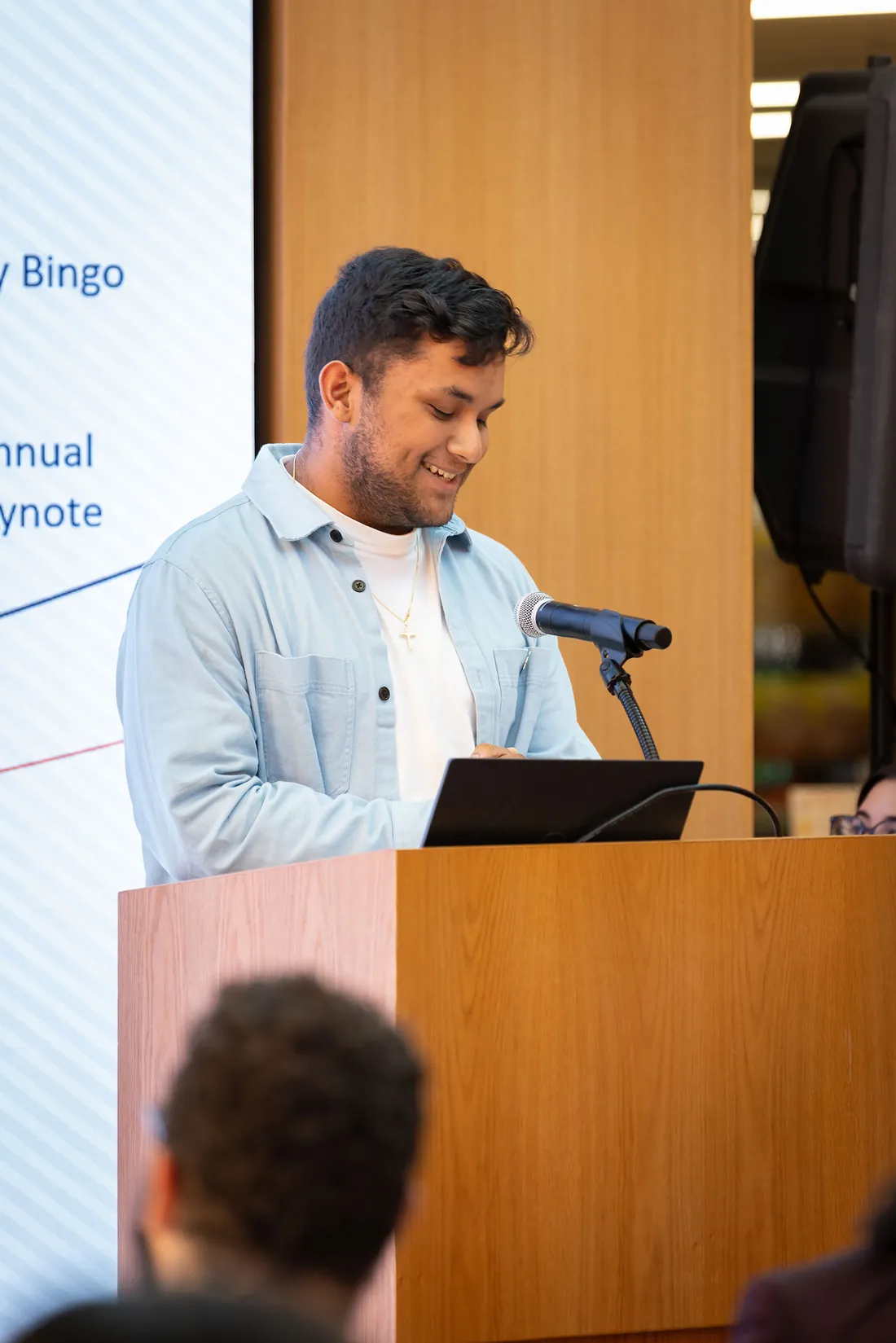
German Nolivos ’26, whose family is from Venezuela, collaborated with a range of student and campus organizations on a Latin music concert as part of the month’s festivities.
Latine Heritage Month programming features a wide diversity of events—from celebratory and fun, to thought provoking to invitations for deep discussions. Fiesta Latina welcomes the campus community to relish cuisines, music and entertainment from Latin America. Art exhibits like those at La Casita Cultural Center and Point of Contact galleries offer critical and creative perspectives on contemporary issues. And the Café con Leche series creates a space to engage in conversations around intersections of queer and Latine or Afro-Latine identities.
Diana Garcia-Varo ’23, G’24, who identifies as Mexican American and was raised in the Bronx, first became involved in Latine Heritage Month when she was an undergraduate, and she found the experience deeply gratifying. Now a master’s student in multimedia, photography and design in the Newhouse School, she created a video for the month’s programming that highlights the contributions of Latine student organizations on campus. Many of the students she spoke with brought up the complexity of Latine identity, she says. “These questions around what is Latine, who is considered Latine—these are important topics that needs to be addressed,” she says. “Through these discussions we grow as a community and in the ways we can work together and connect—whether that be through food, dance or all the rest we have in common. There’s so much that can bring us together.”
Foster Intercultural Understanding

Latine Heritage Month offers valuable opportunities for the Latine community to connect through celebration and through discussion of important topics, says Diana Garcia-Varo ’23, G’24, one of the many students who contributed to the month’s planning.
Celebrating cultural heritage months is an important part of being a diverse, inclusive campus, says Joshua Seguí-Rodríguez, executive director of intercultural engagement with the Division of Student Experience. “We strive to create spaces that reflect all the varied cultures that are present at Syracuse University and in the nation and the world,” he says. “Of course, not every space one walks into is going to center one’s particular culture, but some spaces should. That kind of cultural space-making can really make folks feel at home and it creates opportunities for us to see our cultures reflected, and to also learn about other cultures.”
“We look at history in order to understand the now,” adds Nieves Vergara. “When we highlight communities during cultural heritage months, we're talking about the historical and the ongoing experiences of that community, because the historical moments that shaped our society are continuing to shape us.”
Latine history, she points out, is American history. And the opportunities Latine Heritage Month offer for connection, community-building and intercultural communication are critical for helping students become engaged and empowered citizens of the world. “What we teach and learn helps us in our efforts to transform the world into a more inclusive, more loving, more healing space,” Nieves Vergara says.

